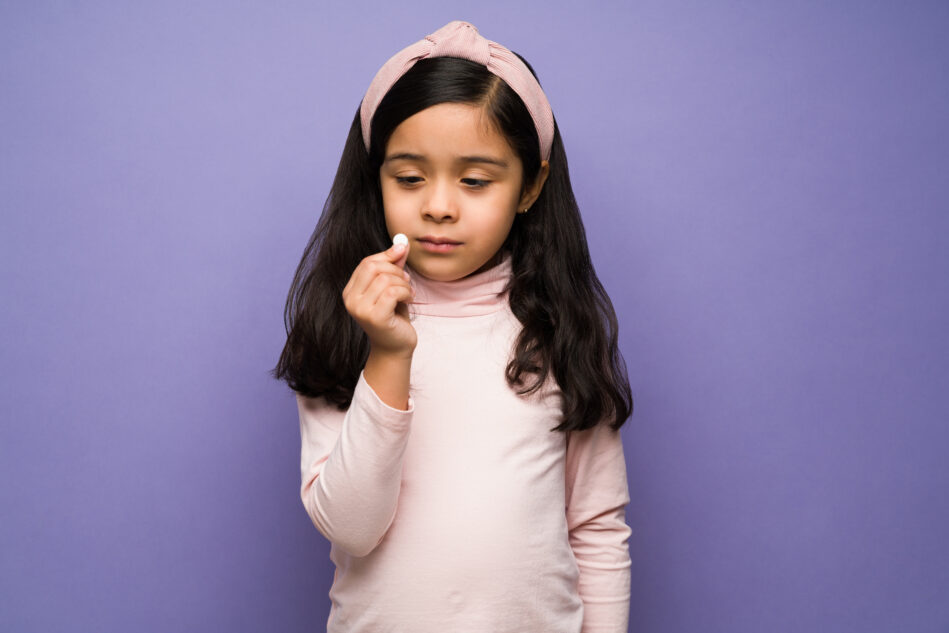Lisa Collien didn’t question the doctor when he prescribed an opioid painkiller (pain medication) to her then 13-year-old son, Brennan. He’d broken his collarbone playing football and was clearly in pain.
At the time, she didn’t know that prescription painkillers can lead to opioid addiction, even among kids like her son, who was firmly anti-drugs and alcohol. But that prescription spiraled into an addiction that Brennan, now in his 20s, struggles with even today. So when Collien’s youngest son, Jaden, landed in the ER with severe abdominal pain and likely appendicitis, she intervened when the nurse said they were going to give him a narcotic.
“He’s fearful of narcotics,” Collien says, “because he’s watched his brother destroy his life with opioids.” Collien asked if they could try a non-opioid painkiller, like ibuprofen or extra-strength Tylenol – and faced pushback from the ER staff.
“The doctor looked at me like I was an idiot,” Collien recalls. She stuck to her guns, but worries that other parents may cave to medical pressure and unwittingly set their kids up for problems with painkillers.
Collien was right to be concerned. “Repeated exposure to a highly addictive drug can result in addiction in almost anyone,” says Andrew Kolodny, MD, co-director of opioid policy research at the Heller School for Social Policy and Management at Brandeis University and executive director of Physicians for Responsible Opioid Prescribing.
‘If you take an opioid every day, in as little as five days physical dependence begins to set in, meaning you may feel sick or uncomfortable when you try to stop taking the medication.’
Drug manufacturers successfully downplayed the addictive potential of prescription opioids for years, emphasizing instead healthcare providers’ responsibility to treat patients’ pain. Today, most people are aware of a link between prescription opioids and addiction, but many still think “the opioid crisis is about ‘bad apples,’” Dr. Kolodny says. But the truth is that most teenagers who use opioids for non-medical purposes first got opioid medication from a doctor, and leftover prescription opioids feed the national opioid epidemic.
No one wants children and teenagers to suffer needlessly. Playground and sports injuries happen, and thousands of youths undergo surgery each year. Appropriate pain management relieves discomfort, improves sleep and facilitates healing. When your child is in pain, asking these 5 questions will help you make an informed decision about pain control.
1. Is this medication a controlled substance?
Although many people are now alert to the dangers of opioids, some don’t realize that Vicodin, hydrocodone or Percocet are opioids. Ask for the name of the drug and ask the physician if the drug is a controlled substance. All prescription opioid medications are classified as controlled substances, which means that the government carefully regulates the sale of these drugs due to high potential for abuse and addiction.
Pain-relieving medications that are available over the counter, such as acetaminophen, ibuprofen or naprosyn, are not controlled substances.
2. Why are you recommending this drug?
Opioid medications remain the drug of choice for treating moderate to severe pain, says Gary Walco, PhD, director of pain medicine at Seattle Children’s Hospital. Children who have experienced significant physical trauma (such as a car crash) or who have cancer pain, for instance, may need opioid pain medication. Physicians also often prescribe opioids to control immediate post-operative pain, although some studies have shown that alternating acetaminophen and ibuprofen may provide similar pain control without the side effects (including the drowsiness and constipation) of opioid medication.
For minor surgeries, such as wisdom teeth removal, alternating acetaminophen and ibuprofen and using ice packs are usually sufficient to control pain. Acetaminophen and ibuprofen may even be enough to keep pain in check after abdominal surgery or surgical repair of a broken bone. If the patient continues to experience significant pain, though, opioid medication is warranted.
“In most circumstances, opioids should be used in addition to, not instead of, other drugs,” Dr. Walco says.
Adequate treatment of pain is essential, both for the patient’s immediate comfort and to prevent future health problems. “We’re finding that poorly treated pain sensitizes the central nervous system to future pain experiences,” Dr. Walco says.
3. Is there anything without drugs that we can try?
Research has shown that non-drug modalities, such as heat or ice therapy or exercise, may improve comfort and decrease the need for pain medication. Healthcare providers don’t often think to recommend these options, though, so specifically asking about non-medication pain relief may unleash some helpful suggestions.
4. How long do you think my child will need this medication?
The longer a person takes an opioid, the higher the chances of eventual addiction. A 2017 study found that patients who got a one-day supply of opioids had about a 6% chance of being on opioids for a year or longer, while patients who got a five-day supply had a 10% chance of using opioids a year later. Patients who received a 10-day supply had a 20% change of using opioids after a year.
“If you take an opioid every day, in as little as five days, physical dependence begins to set in, meaning that you may feel sick or uncomfortable when you try to stop taking the medication,” Dr. Kolodny says. “If an opioid is needed, you want the lowest dose for the shortest period of time possible.”
Moderate-to-severe pain usually only persists for a day or two after surgery or a serious injury, so most children will not need opioid medication for longer than a few days. In fact, research has shown that many people who are prescribed opioid pain medication after dental surgery don’t use all their medication.
5. How should I dispose of this drug?
“We know that the number one place that people get opioids [for non-medical purposes] is from opioids that have been prescribed but have not been consumed for pain and are then sitting in the medicine chest,” Dr. Walco says.
The US Drug Enforcement Administration (DEA) hosts National Prescription Drug Take-Back events, and many communities have designated take-back locations (often at a local pharmacy or law enforcement agency). If a take-back program is not available, you may be able to flush the unused medication down the toilet.






